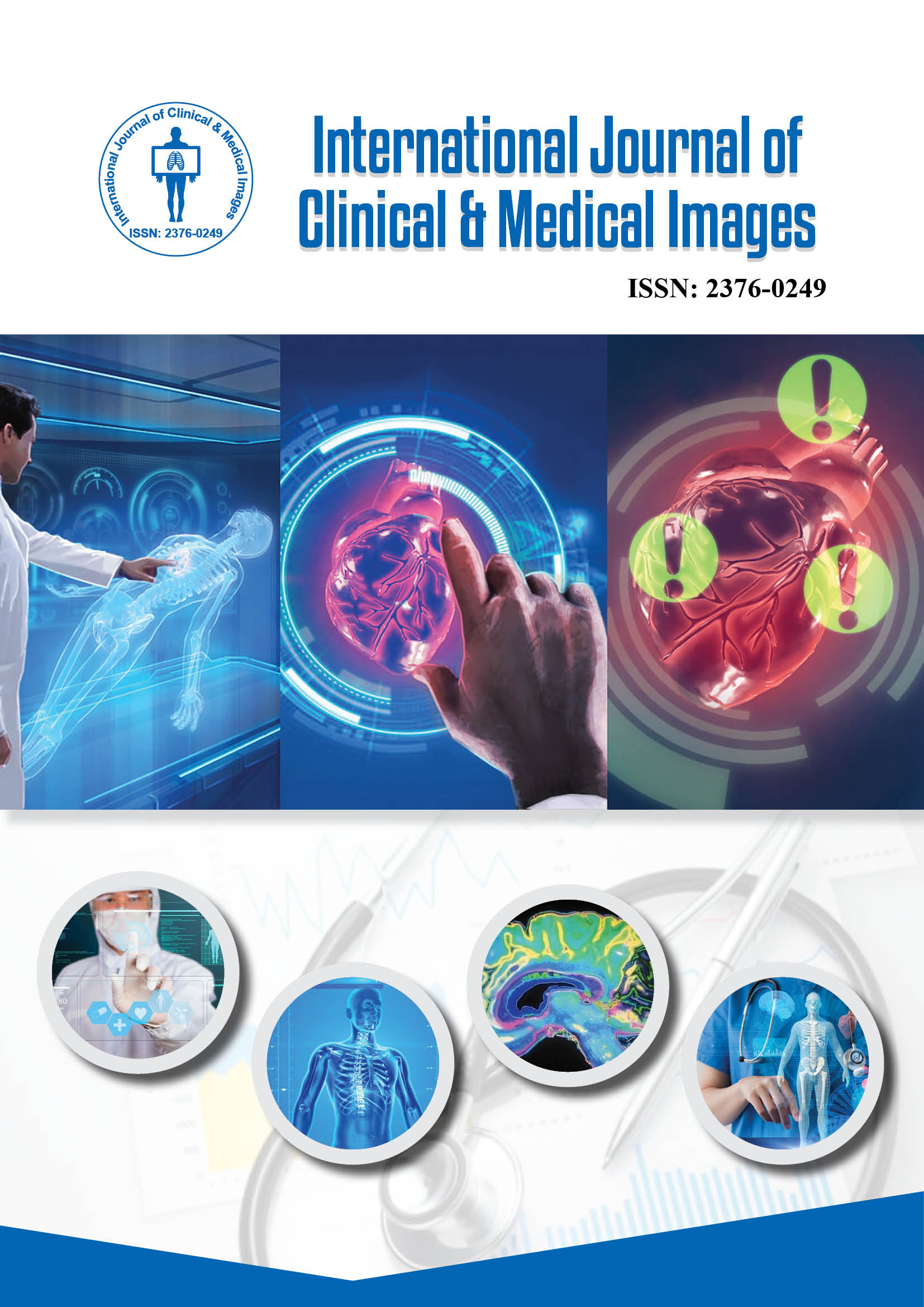2376-0249
Clinical Image - International Journal of Clinical & Medical Images (2017) Volume 4, Issue 1

Author(s): Khan A and Leung PS
Clinical Image: A 57-year-old female presented to the emergency department with a two-day history of left lower quadrant abdominal pain. Vital signs and results of a complete blood count and basic metabolic panel were unremarkable. Abdominal exam was significant for localized left lower quadrant peritonitis. Computed tomography of the abdomen and pelvis showed diffuse fatty infiltration and mild peritoneal thickening in the left abdomen suggestive of omental infarct/fat necrosis (Figure 1). Patient was treated conservatively using NSAIDS with no success. Laparoscopy revealed large infarcted epiploic appendage adhered to the anterior abdominal wall along with the greater omentum (Figure 2). After the epiploic appendage was separated from the anterior abdominal wall and greater omentum, torsion of its vascular pedicle was seen (Figure 3). The vasculature was divided with laparoscopic electrocautery device and the specimen was removed from the abdomen (Figure 4). Her pain improved immediately following the surgery. She was discharged home the next day
 Awards Nomination
Awards Nomination

